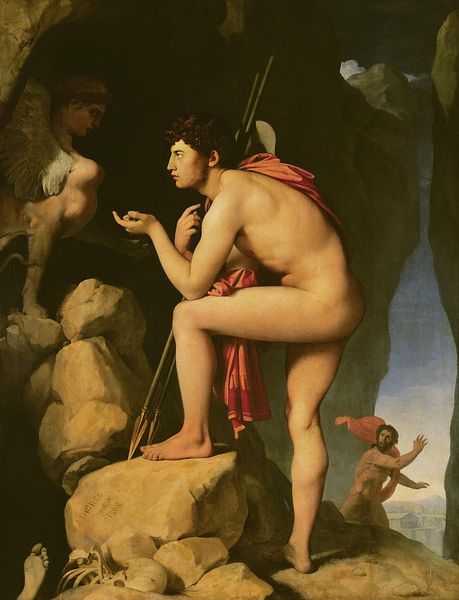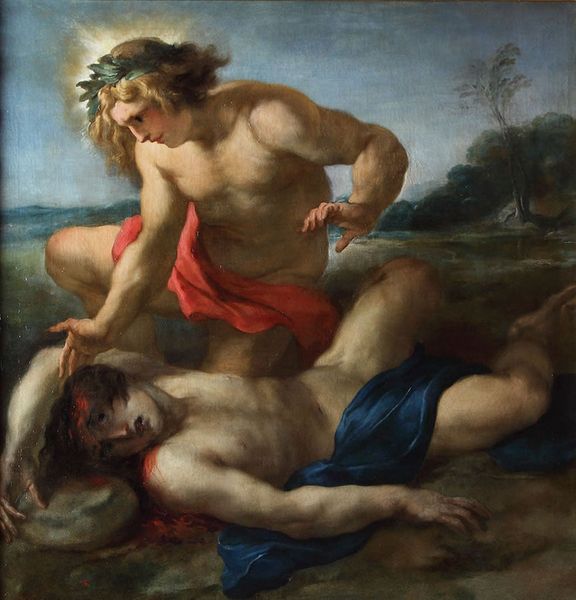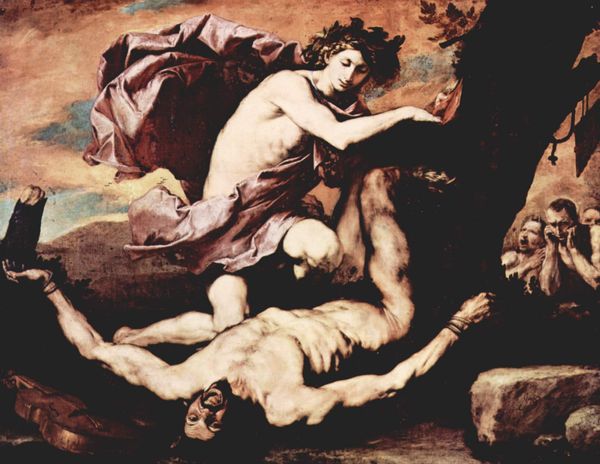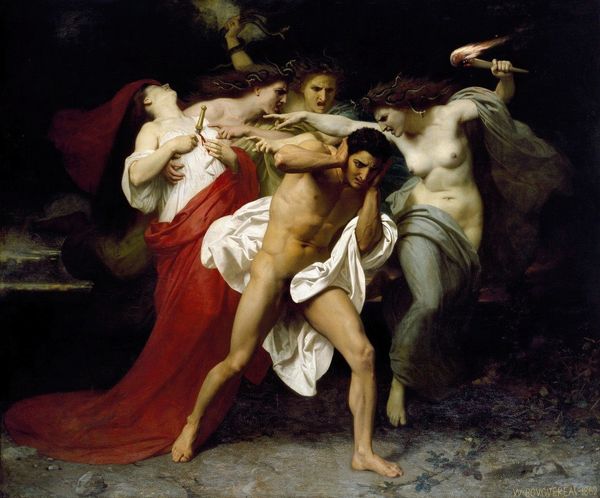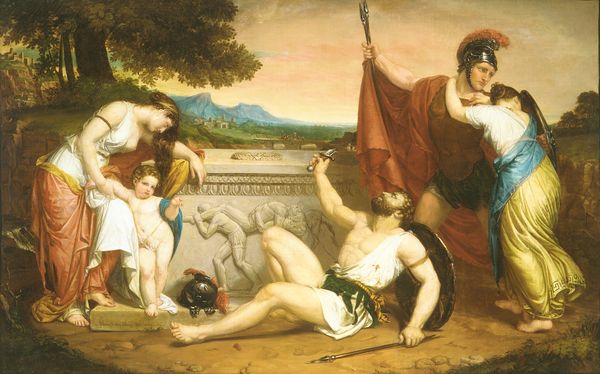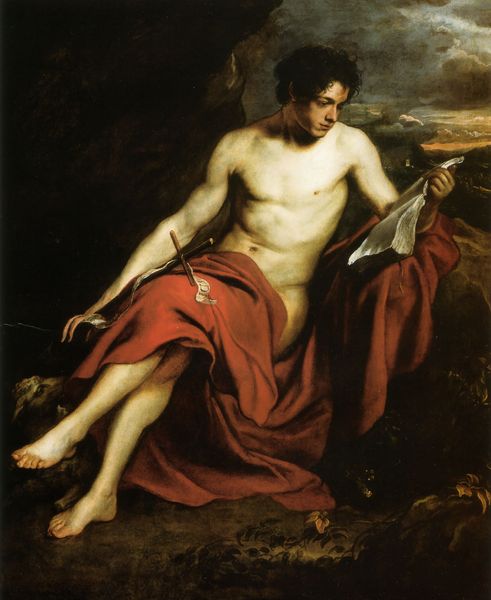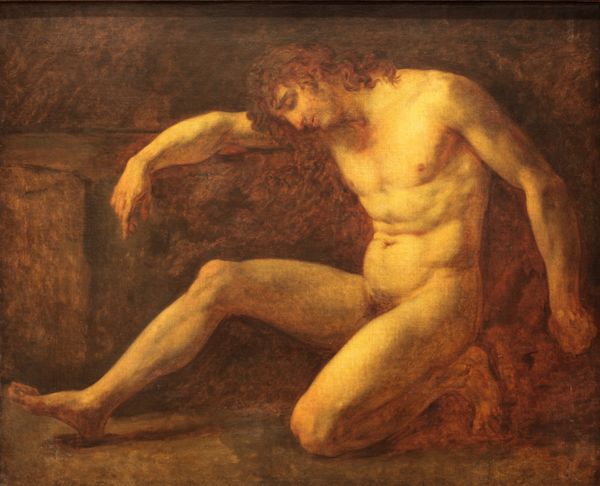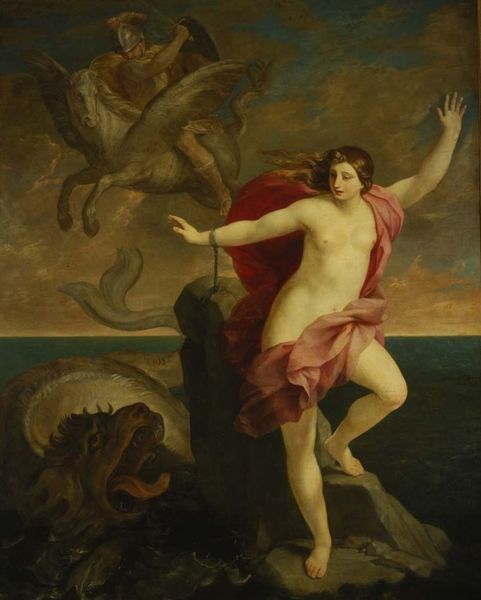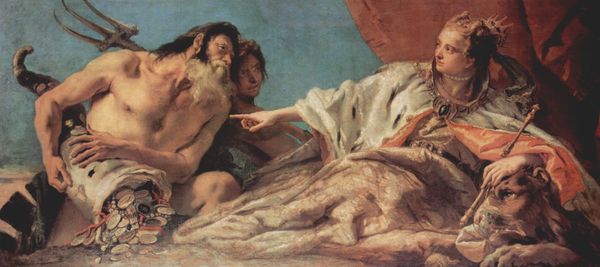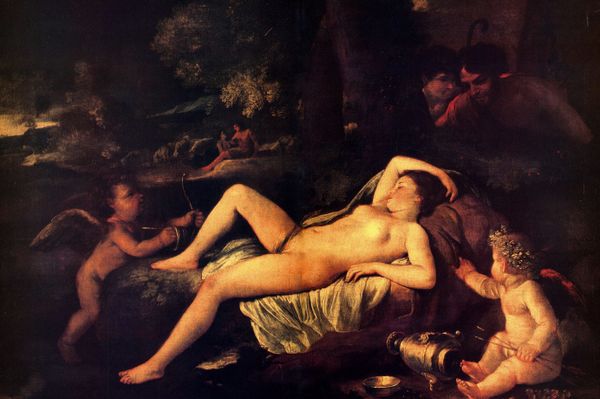
oil-paint
#
allegory
#
oil-paint
#
mannerism
#
figuration
#
oil painting
#
mythology
#
history-painting
#
italian-renaissance
#
nude
Copyright: Public domain
Editor: So this is Dosso Dossi's "Sapiente con compasso e globo" from 1530, done in oil. The figure seems to command the very cosmos, but there's also a sense of vulnerability, lying on the ground like that. How do you interpret this work, thinking about its symbols? Curator: Dossi crafts a powerful allegory here, interweaving symbols of knowledge and mortality. Note the compass and globe, instruments of understanding, paired with the exposed, reclining figure. He's a scholar, perhaps, but the flamboyant red drape and his nakedness hints to mythology. It reminds us of a Renaissance fascination: ancient gods representing both power and earthly desires. Do you think he looks more mortal or divine? Editor: I see both, actually! There's that striving upward gaze, almost god-like, but the weight of the body, so firmly planted, feels very human. Curator: Exactly! This tension embodies a key Mannerist trait. Look how the exaggerated musculature contrasts with the soft light. This creates a psychologically charged image, reflective of the intellectual debates swirling through the Renaissance. Consider, too, the subtle melancholy in the gaze. Does that evoke anything specific for you? Editor: Perhaps a reflection on the limits of human understanding, even with all those tools? The world, or maybe the universe, is still beyond our grasp? Curator: Precisely. Dossi isn't just celebrating knowledge. He's inviting contemplation on our place within the cosmos and our fleeting existence, ideas mirrored through this arresting blend of allegorical symbols and vulnerable human form. Editor: That’s fascinating. I hadn't thought about it in terms of vulnerability versus ambition, but that tension really unlocks so much in the painting. Thanks!
Comments
No comments
Be the first to comment and join the conversation on the ultimate creative platform.

